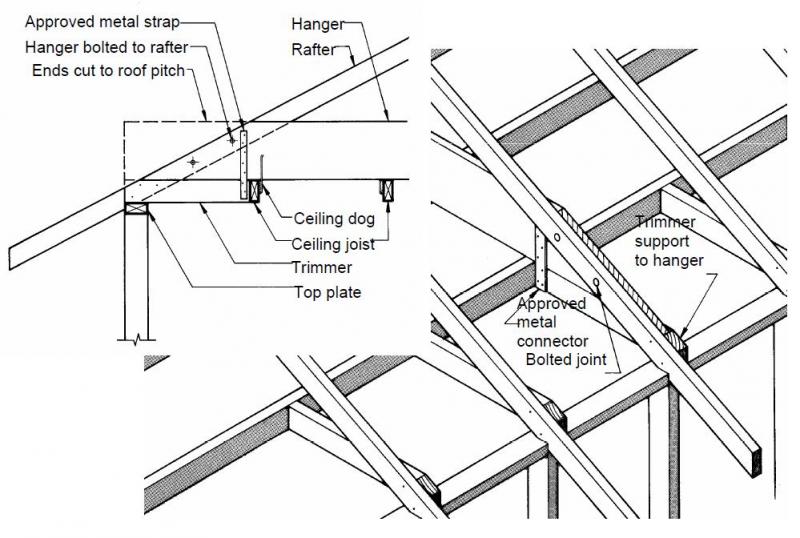Hi, tried asking this in "Building" but to no avail. Wondered if the Joiners here might be more forthcoming. Here goes:
I am wishing to place a narrow walkway in my loft space above insulation for inspection purposes. Although there will be no imposed load above and beyond a brief annual inspection of rafters, it is my understanding that I should never the less treat any laid surfaces as floors.
My intention is to avoid involving the existing joists. Instead I wish any walkways to instead bear only upon load-bearing walls. To this end it is my intention to install additional beams spaced above the existing joists of sufficient strength, so as to support fully the proposed walkway between load bearing walls.
This plan seems pretty straightforward where the load bearing walls are internal. However, because my roof is hipped and these beams must sit above the joists when running at right angles to them (as in the direction of binders), it is impossible to bring the ends of these beams over the external walls and thus support them directly.
I have, in my searches, found a solution to this problem, but only on an Australian site. It is my hope that one of the good folk here might either be able to confirm this as a Building Regs compliant solution, or suggest an alternative. I attach a grabbed pic of the proposed solution as well as a link to the document that contains it.
I'd be very grateful for all and any input.
Cheers.
Page 13, Basic Roof & Ceiling Framing, TAFE : NSWhttp://mikestrade.sydneyinstitute.wikispaces.net/file/view/Basic+Roof+Part+1+pages+1+-+26.pdf
I am wishing to place a narrow walkway in my loft space above insulation for inspection purposes. Although there will be no imposed load above and beyond a brief annual inspection of rafters, it is my understanding that I should never the less treat any laid surfaces as floors.
My intention is to avoid involving the existing joists. Instead I wish any walkways to instead bear only upon load-bearing walls. To this end it is my intention to install additional beams spaced above the existing joists of sufficient strength, so as to support fully the proposed walkway between load bearing walls.
This plan seems pretty straightforward where the load bearing walls are internal. However, because my roof is hipped and these beams must sit above the joists when running at right angles to them (as in the direction of binders), it is impossible to bring the ends of these beams over the external walls and thus support them directly.
I have, in my searches, found a solution to this problem, but only on an Australian site. It is my hope that one of the good folk here might either be able to confirm this as a Building Regs compliant solution, or suggest an alternative. I attach a grabbed pic of the proposed solution as well as a link to the document that contains it.
I'd be very grateful for all and any input.
Cheers.
Page 13, Basic Roof & Ceiling Framing, TAFE : NSWhttp://mikestrade.sydneyinstitute.wikispaces.net/file/view/Basic+Roof+Part+1+pages+1+-+26.pdf


